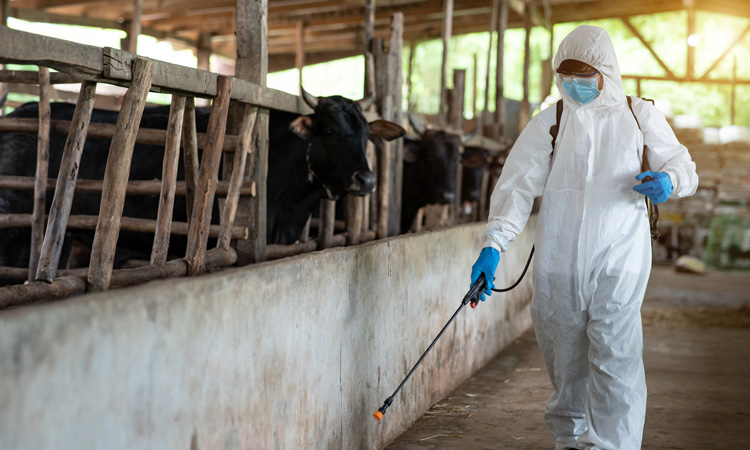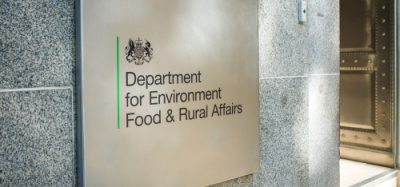COVID-19 ‘path to recovery’ published by UK food industry
- Like
- Digg
- Del
- Tumblr
- VKontakte
- Buffer
- Love This
- Odnoklassniki
- Meneame
- Blogger
- Amazon
- Yahoo Mail
- Gmail
- AOL
- Newsvine
- HackerNews
- Evernote
- MySpace
- Mail.ru
- Viadeo
- Line
- Comments
- Yummly
- SMS
- Viber
- Telegram
- Subscribe
- Skype
- Facebook Messenger
- Kakao
- LiveJournal
- Yammer
- Edgar
- Fintel
- Mix
- Instapaper
- Copy Link
Posted: 9 June 2020 | Sam Mehmet (New Food) | No comments yet
Over 30 UK food and beverage organisations have endorsed the publication of Building a Path to Recovery – a set of proposals for government and industry to consider when planning for the future of the food and beverage sector post-COVID-19.


Industry figures across the UK have published a ‘path to recovery’ for the food and beverage industry post-COVID-19. The proposals aimed to outline steps that government and industry can take to future proof the sector, and call on the government to address the UK’s negative balance of trade in food.
Contributing organisations include: Northern Ireland Food and Drink Association (NIFDA), British Food Importers & Distributors Association (BIFDA), British Frozen Food Federation (BFFF), British Meat Processors Association (BMPA), Federation of Bakers (FoB), Food and Drink Federation (FDF), Health Food Manufacturers’ Association (HMFA), UK Flavour Association (UKFA) and Ulster Farmers Union (UFU).
“COVID-19 has challenged the UK food and drink industry in a once in a generation way. Food manufacturers have been working harder than ever to ensure that the nation is fed – with companies having to adapt to an evolving situation at a rapid pace, responding to changes in demand and implementing social distancing measures. Within a short period of time, firms have reengineered and reimagined processes, requiring a significant level of investment. Put simply, the industry has demonstrated both its ingenuity and its necessity in these unprecedented times,” said Michael Bell, Executive Director of NIFDA and coordinator of the report.
The report laid out seven objectives crucial to build success in the ‘new normal’:
Balance of trade (employment and productivity) gains – sector-specific
- Maximise value addition, capacity and productivity
- Maximise global reputation.
Move to healthier diets (nutrition, energy balance, portion size)
- Identify key initiatives industry can undertake with government across all departments.
Integrity gains (CO2, environment, and animal welfare)
- Minimise waste
- Maximise environmental and animal integrity
- Identify market failures/strategic interventions government could make
- Identify areas where failure is unavoidable.
“Just as the government has taken courageous and rapid decisions to address the challenge of the pandemic, we now need to deliver a ‘pathway to recovery’ for UK food and drink. Industry stands ready to work with government on this, and our proposals outline actions government and industry can take to future proof the sector. In the short-term we need to protect our capacity in food production, ensuring our domestic farming, processing and food service sectors are able to emerge from this crisis intact,” Bell continued.
“In the longer term, the government needs to reassess its policy on food and drink. For too long, successive governments have been content to witness continual decline in self-sufficiency in food. The strain that COVID-19 has put on the food chain has exposed the inherent weaknesses in this approach, and we now have an opportunity to reverse that trend. It will require serious investment, but the economic and societal gains would be immense. The UK currently has a trade deficit of some £24 billion in food. Assuming 30 percent of this could be produced efficiently in the UK, a balance of trade benefit of up to £8 billion could be realised.
“The UK’s food and drink industry and the wider ‘eating ecosystem’ of other sectors it supports – farming, transport and logistics, cold stores, packaging, catering, food service and retail – contributes £460 billion to the national economy, employing millions of people across England, Scotland, Wales and Northern Ireland. The ‘path to recovery’ proposals provide the opportunity to build on that success, and deliver new gains for society across the UK as we emerge from this pandemic.”
The UK food industry “Building a Path to Recovery” document can be found here.
Related topics
COVID-19, Regulation & Legislation, Research & development, Supply chain, Sustainability









